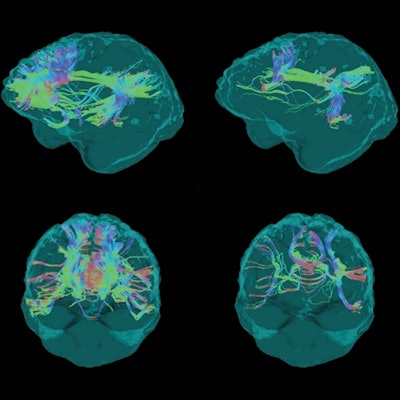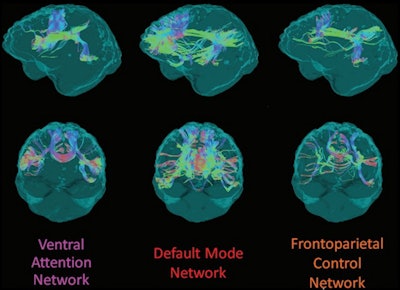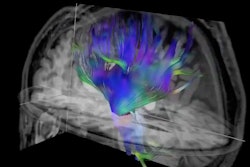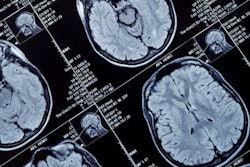
MRI with a diffusion-tensor imaging (DTI) protocol could help clinicians predict when patients who have a genetic mutation that puts them at risk of Alzheimer's disease may develop the condition, according to a study published October 12 in Radiology.
The study results "show the promise of widely available imaging techniques in helping to understand early structural changes in the brain before symptoms of dementia become apparent," the RSNA said in a statement.
"[Our study] shows the potential of MRI as an evaluation tool in patients who are deemed at-risk for Alzheimer's disease before they develop symptoms," study lead author Dr. Jeffrey Prescott, PhD, of Duke University in Durham, NC, said in the statement. "Use of ... advanced MRI techniques could help further refine identification of at-risk patients and risk measurements."
Individuals with the autosomal dominant Alzheimer's disease (ADAD) mutation are at higher risk of developing the condition, the authors noted. This mutation is associated with the buildup of beta-amyloid protein, which negatively affects the brain's gray and white matter. Radionuclide imaging has often been used to assess Alzheimer's progression, but researchers have lacked a way to measure changes in the brain's physical networks that support cognitive health.
"[There] is a need to determine how pathologic changes in network connectivity, in turn, mediate the onset of dementia," the authors wrote.
Prescott and colleagues conducted a study that explored whether brain network differences in cognitively normal individuals with ADAD mutations compared to those without them could shed light on Alzheimer's disease progression. The research used data from the Dominantly Inherited Alzheimer Network (DIAN) for 30 mutation carriers and 38 noncarriers; all had healthy cognition when they underwent structural brain MRI and DTI exams.
The investigators found that those study participants with the mutation had less structural connectivity on DTI-MRI scans in the frontoparietal control network part of the brain, which connects two regions understood to be involved with Alzheimer's disease. They also discovered a connection between expected years until onset of symptoms and white matter structural connectivity in this network, even when they controlled for amyloid plaque burden.
"We used a network measurement called global efficiency, in which a decreased efficiency can be taken as a breakdown in the organization of the network," Prescott said. "The results show that for mutation carriers, global efficiency would decrease significantly as they approach the estimated age of symptom onset."
 Example of structural connectivity of the three analyzed distributed cortical networks from one participant in the DIAN cohort, viewed laterally from the left (top row) and anteriorly (bottom row). Streamline colors indicate directionality of water diffusion at diffusion tensor imaging: green = anteroposterior, red = left-right, blue = superoinferior. Images and caption courtesy of the RSNA.
Example of structural connectivity of the three analyzed distributed cortical networks from one participant in the DIAN cohort, viewed laterally from the left (top row) and anteriorly (bottom row). Streamline colors indicate directionality of water diffusion at diffusion tensor imaging: green = anteroposterior, red = left-right, blue = superoinferior. Images and caption courtesy of the RSNA.More research on structural brain changes in people vulnerable to Alzheimer's disease is needed, wrote Linda McEvoy, PhD, of the University of California, San Diego, in an accompanying editorial.
"With further study, network efficiency metrics based on diffusion imaging measures may themselves prove useful as markers of brain changes in the preclinical phase of AD," McEvoy noted. "Prognostic markers of early brain changes could be helpful in determining the efficacy of measures designed to prevent neurodegeneration, which would enable the preservation of cognitive function in individuals at risk for Alzheimer's disease."




.fFmgij6Hin.png?auto=compress%2Cformat&fit=crop&h=100&q=70&w=100)




.fFmgij6Hin.png?auto=compress%2Cformat&fit=crop&h=167&q=70&w=250)











